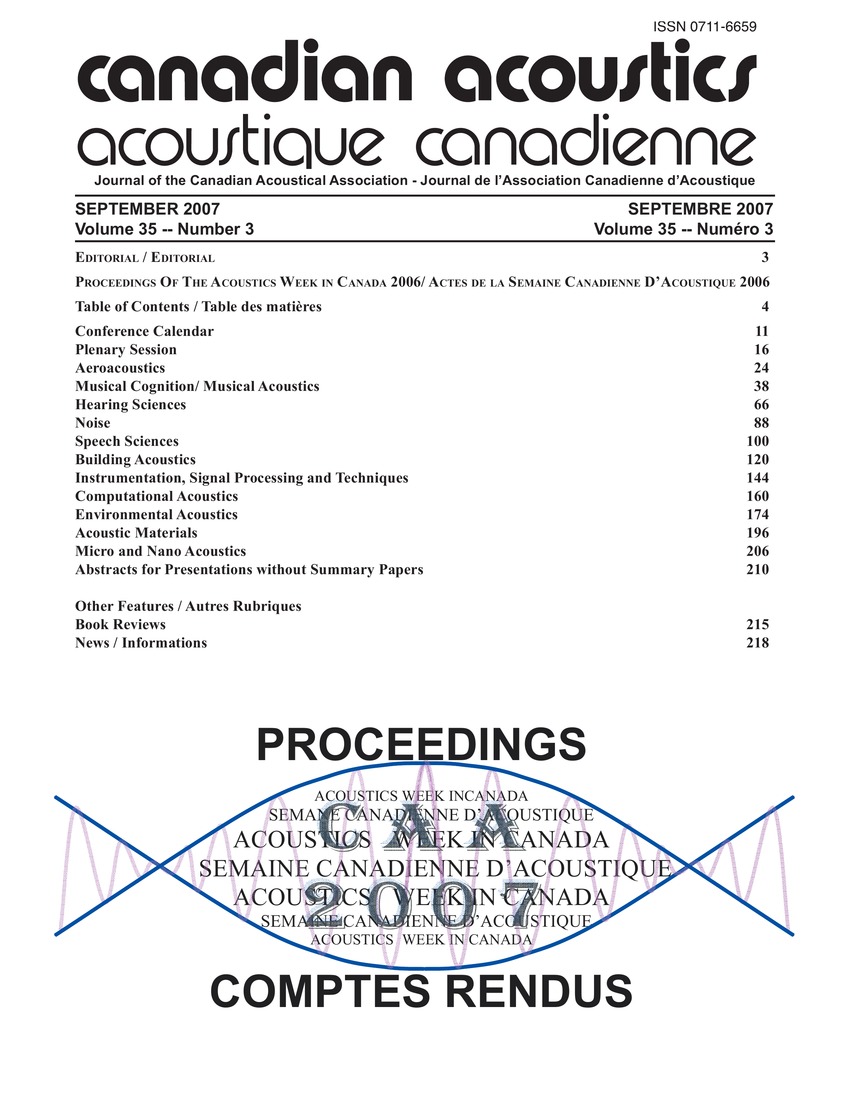Learning user volume control preferences in hearing aids
Keywords:
Adaptive algorithms, Behavioral research, Data acquisition, Learning algorithms, Optimal systems, Volume measurement, Learning user volume control, Real data, Self-learning, Time constantAbstract
The advancements in the learning of user control preferences to minimize the amount of adjustments being made to the hearing aids over time are discussed. The concept of self-learning hearing aids address the issues of fine tuning and optimal adjustment by learning the settings a user prefers in environments that are presented on a daily basis. The learning algorithm learn different user behaviors and behaviors were simulated to supplement any real data. The performance error measures are the average over all phases in a user profile of the difference between the learned value for a phase. The parameters for the three adaptive algorithms are tuned to the best values for the profile and compared to the optimum fixed time constant for the profile. The optimum parameters of hearing aids perform as good as the best fixed time constant on a profile-by-profile basis of a user control.Additional Files
Published
How to Cite
Issue
Section
License
Author Licensing Addendum
This Licensing Addendum ("Addendum") is entered into between the undersigned Author(s) and Canadian Acoustics journal published by the Canadian Acoustical Association (hereinafter referred to as the "Publisher"). The Author(s) and the Publisher agree as follows:
-
Retained Rights: The Author(s) retain(s) the following rights:
- The right to reproduce, distribute, and publicly display the Work on the Author's personal website or the website of the Author's institution.
- The right to use the Work in the Author's teaching activities and presentations.
- The right to include the Work in a compilation for the Author's personal use, not for sale.
-
Grant of License: The Author(s) grant(s) to the Publisher a worldwide exclusive license to publish, reproduce, distribute, and display the Work in Canadian Acoustics and any other formats and media deemed appropriate by the Publisher.
-
Attribution: The Publisher agrees to include proper attribution to the Author(s) in all publications and reproductions of the Work.
-
No Conflict: This Addendum is intended to be in harmony with, and not in conflict with, the terms and conditions of the original agreement entered into between the Author(s) and the Publisher.
-
Copyright Clause: Copyright on articles is held by the Author(s). The corresponding Author has the right to grant on behalf of all Authors and does grant on behalf of all Authors, a worldwide exclusive license to the Publisher and its licensees in perpetuity, in all forms, formats, and media (whether known now or created in the future), including but not limited to the rights to publish, reproduce, distribute, display, store, translate, create adaptations, reprints, include within collections, and create summaries, extracts, and/or abstracts of the Contribution.


